#guys- the two major points of the story are that propaganda can lead otherwise good but angry/vulnerable people to do bad things
Explore tagged Tumblr posts
Text
Congrats mdzs fandom, you win-

At least the fe3h has the excuse that certain ideas were executed so poorly that what you were supposed to take out of them was left unclear. Mdzs is more or less a perfectly executed story and I still see 50 wild takes on it a day
#mdzs#mo dao zu shi#grand master of demonic cultivation#i'm tired#guys- the two major points of the story are that propaganda can lead otherwise good but angry/vulnerable people to do bad things#and that misinformation spreads like wildfire and rumors aren't reliable so you should fact check shit before coming to conclusions#if we are not given an answer on something it is because the speculation is the point#no character is a 100% morally good or bad. stop pretending they're only their best or only their worst moments#characters are both their best and worst moments. acting like only one is canon is disingenuous
12 notes
·
View notes
Text
8 Tips for writing an effective redemption arc (featuring Zuko and Catra!)
1. Consider what kind of redemption arc you want your character to go through
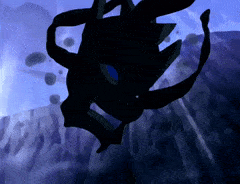
Generally speaking, there are two different kinds of redemption arcs your villain can go through; sacrifice arcs and temptation arcs. I will describe both of these, but ideally your character will have pieces from each in order to create a nice, well rounded arc.
A sacrificial redemption arc is pretty easy; towards the end of your story, game, or other writing, your character goes through something of a “waking up.” They realize that what they thought of events or their surroundings is wrong, or realize that what they thought they want isn’t really what they want OR need. Another way they could go about this is by realizing that through their ambition (or other motivation) things had gotten too far. For example, throughout She-Ra and the Princesses of Power, Catra’s goals have surrounded getting the things she feels like she has been deprived of her whole life; within the first season, this involves getting power over her abusive mother figure, Shadow Weaver. She then continues her climb for power within the Horde, but in the final season as she sits in a space ship and watches her home planet burn, she realizes that her push for power has gone too far and sacrifices herself for one of the main protagonists so that she could escape. It is essential that characters have a chance have a moment of realization in which they not only realize they’ve been evil or cruel, but also that they need to make amends in one way or another.
Temptation arcs are when villains waiver between good and evil throughout much of the story. They waver between good and evil, typically committing both acts that are beneficial to the protagonist(s) and against them before eventually permanently sticking with the side of good. This form of redemption arc involves lots of internal conflict within the villain. The second half of Book Two in Avatar: The Last Airbender is an excellent example, with Uncle Iroh really pushing Zuko to consider what HE wants and thinks his destiny should be rather than the destiny that Fire Lord Ozai had put upon him. Zuko constantly grapples with this and does both good and bad things that affect Team Avatar, such as freeing Appa underneath Lake Laogai and siding with Azula during The Crossroads of Destiny. An arc in which a character solely moves upwards or downwards is not that interesting. In order to tell a more powerful story that keeps the audience engaged, there has to be some variation- after all, if it’s all going one way, it’s predictable, and no one cares to see what could happen next.
2. Establish why your villain is evil in a way that makes them sympathetic
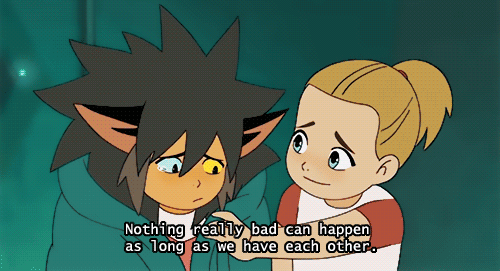
Villains who are evil for the sake of being evil are boring. They need to have a reason to be evil and to be motivated towards evil especially if they’re going to eventually turn towards the side of good. If a character is good and they’re just with the bad guys for no reason, their switch over to the side of good is ineffective and boring in a “why didn’t they just do that in the first place” sort of way.
When writing an effective redemption arc, your audience needs to be sympathetic towards them in one way or another. For both Catra and Zuko, one of the ways that the writers made the audience sympathetic towards them is through their abusive parental figures in Shadow Weaver and Fire Lord Ozai. The reasons that Zuko and Catra do the things that they do in opposition to the protagonists is because of the actions of their abusers.
Zuko is going against Aang, Katara, Sokka, and Toph for much of the series is because he has been lead to believe that the only way to gain the love and approval of his father is by capturing the Avatar. Catra, however, takes a different approach; while she craves the feeling of being loved and belonging, she has been put into a powerless position by Shadow Weaver enough times that she desperately wants power over her and works to climb through the ranks of the Horde in order to do so. A major part of their redemption arcs is when Zuko realizes he doesn’t need the love of his father and Catra realizes that her ambition has put her entire planet in danger of being razed by the dictator of the rest of the known universe.
Rising up against an abusive parent or an otherwise tragic backstory doesn’t have to be the only way to make a character sympathetic, however. There are lots of ways to make a character sympathetic.
3. Give the audience a reason to root for the villain too

If you’re planning to give a character a redemption arc, it’s necessary to make it so that they root for them from time to time. That way it will ensure that the audience doesn’t hate them when the time comes for them to join the protagonists on the side of good. If they don’t like them, even if the redemption arc is well written, it will seem forced in a certain way. This is usually accomplished by the presence of another villain.
For example, while Zuko is certainly the most prominent villain of Book One of ATLA, Admiral Zhao is arguably the main antagonist of the season. Fire Lord Ozai hadn’t even been introduced officially yet (besides being mentioned) so as the man that had the goal of destroying the Northern Water Tribe by killing the Moon Spirit. He repeatedly attacked Team Avatar throughout the season, with much higher firepower, more brutality, and lack of regard for civilians. Zuko, however, while he had similar goals in regards to capturing Aang, was much more “reasonable” when it came to other things, such as keeping his promise to leave the Southern Water Tribe alone if Aang agreed to go with him in the second episode. We also see Zhao being cruel to Zuko in multiple instances, even getting into fights. Because Zhao is more brutal and is motivated by greed over honor, the scenes in which Zhao and Zuko are fighting, the audience is rooting for Zuko.
Similarly, at the end of the first season of She-Ra, Catra fights against Shadow Weaver; in the scenes in which they portray the two of them interacting previously, Shadow Weaver is cruel to Catra, constantly scolding and threatening her. Despite both Shadow Weaver and Catra being Adora’s enemy throughout the series, in this fight the audience is genuinely rooting for Catra in this fight because until that point, Shadow Weaver has been the more cruel and abusive villain.
4. Keep up with them even when they’re not in direct contact with the protagonists
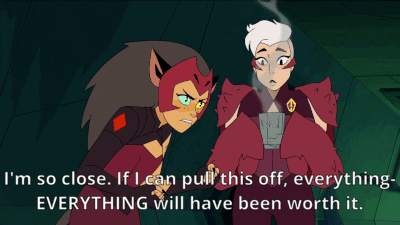
This may seem obvious, but if you’re going to give a character a redemption arc you and the audience need to keep up with them even when they’re not interacting with the main protagonists. It will not only allow the audience to see the progression, but it will also keep the audience from being confused when they show up suddenly on their side. It’s perfectly reasonable (and expected) for the protagonists to be confused, but the audience shouldn’t share that same confusion (unless you’re planning on having the villain’s redemption arc be described in flash backs or have them explain it in a long monologue).
For Catra, there are many episodes when we see her without Adora, Glimmer, or Bow, instead just being with Scorpia, Hordak, and Entrapta. This way we are able to keep up with her when she’s not fighting with the Rebellion, allowing us more insight into her thoughts, feelings, and relationships. We are able to see her drive people away in her desire for power, not realizing that she is looking for acceptance all along.
Likewise, Zuko in the beginning of Book Three doesn’t interact with Team Avatar; instead he is in the Fire Nation Royal Palace, with anything he could ever want, realizing that he is still unhappy. It would have made no sense from the perspective of the audience if the last time they saw Zuko was when he betrayed Team Avatar and his uncle in Ba Sing Se and then he just showed up after the Day of Black Sun and offered to teach Aang firebending.
5. Introduce a good influence
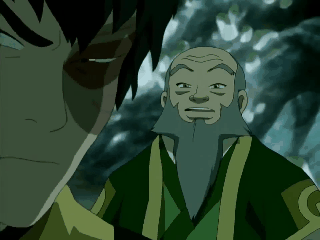
The villain needs something or someone that can help them inspire change within. It isn’t just enough to vow to stop committing evil and then all is swell; they need to genuinely learn from their mistakes and commit to change within. This catalyst can be something they haven’t previously encountered (giving them a new perspective) or something else that pulls on their heartstrings. Either way it’s something that needs to get their attention.
Zuko would not have been able to change as much as he did throughout his redemption arc if it weren’t for Iroh. Iroh is a great influence on Zuko, constantly encouraging him to think for himself and make his own decisions. Iroh wanted Zuko to be able to decide for himself what his destiny is instead of just fulfilling the destiny that Ozai had put upon him. Zuko also was able to gain perspective when he and Iroh are disguised as refugees, seeing that the citizens of the Earth Kingdom are not only real people, but also that they are afraid and hurt by the Fire Nation instead of like the propaganda that the Fire Nation is bringing greatness to the world.
For Catra, in a certain way, one of the final catalysts to her finally joining the side of good is Queen Glimmer. When they are both trapped on Horde Prime’s ship together, Catra realizes that she is the one that has brought him and his galactic empire to Etheria, which he has every intention of using as a weapon against the rest of the universe. She feels alone and isolated and the only person she can talk to about it from her own planet, who has also contributed to the arrival of Horde Prime in her own way, although she is being treated as a prisoner. Glimmer begs Catra to help her and, upon realizing the destruction she has wrought and all the bad things she has done, Catra does help her and states that she wants to do one good thing in her life. Catra knows that she has done awful things in her life but this is one of the first times that she is able to really admit to herself and others that she knows that much of what she is doing is wrong.
6. The reactions of others

If your character has been an antagonist for a long time, it makes absolutely no sense that your other protagonists would accept them. It takes a long time to earn people’s trust so even if a character does something dramatic like self-sacrifice many characters should be suspicious of them. It’s unrealistic to expect everyone to be buddy-buddy immediately.
After Catra sacrifices herself so that Glimmer could escape, Glimmer and Adora want to rescue her, but the others were quite skeptical, with Nettossa and Frosta actually attacking Catra until Adora vouched for her. Similarly for Zuko, he had to prove himself to the original trio by helping Aang learn an ancient technique of firebending, helping Sokka rescue Suki and his father, and helping Katara find the man that murdered her mother. Trust is not easily given, so if your ex-villain has been going against your protagonists for several seasons, trust is not going to just be given to them so easily. There’s bound to be a lot of distrust from those who have known them in the past, but some are going to struggle with that doubt more than others. It’s important to actually consider your characters’ personalities and rationale and stay true to how they would actually think, along with the logic behind their decisions, in regards to your ex-villain’s redemption.
It can also be helpful to add in some jokes made by the ex-villain or at their expense in order to alleviate tension or show that they’re starting to get along better with the other protagonists (ex: “That’s rough buddy” or “I can’t believe the whole time you were trying to kill us you had the cutest sneeze of all time!��)
7. Realizing they’re in the wrong should not be the climax of their arc
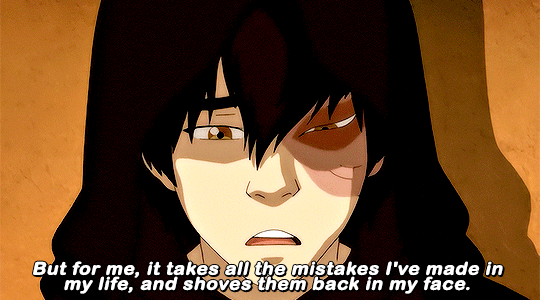
Your character realizing that they’re wrong should not be the final step of their redemption arc; in fact, realizing they’re in the wrong should be among the first steps of their redemption. The redemption arc isn’t about realizing that they’ve been the bad guy all along and that’s... it. There’s a certain level of atonement that needs to be done in order to be redeemed. At the very least the character needs to realize why they’ve been wrong after realizing that they’re wrong.
After Zuko realizes that he is wrong for trying to capture Aang and that the Fire Nation is wrong for prolonging this war, he takes steps to make things right. He confronts his abusive father, leaves his home voluntarily, and helps to train Aang in firebending among other things, eventually allowing them to defeat the Fire Lord. Zuko even apologizes to the entire group for his prior misdeeds.
Catra also has to work for her redemption. She realizes that she’s in the wrong, but even afterwards she persists because she believes that staying with the Horde is the best way that she can get back at the people who have hurt her, namely Shadow Weaver (for her abuse towards her) and Adora (for leaving her behind to join the Rebellion). It isn’t until she is captured by Horde Prime that she makes the decision to atone for what she has done by rescuing Glimmer and sending her back to Adora. Even after Catra is rescued, she is still making efforts to be better than she was before, saying that she’s working on controlling her anger.
8. Sometimes it’s not meant to happen
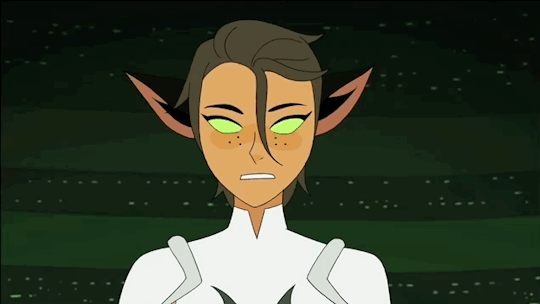
Sometimes characters can’t be redeemed. Genocidal dictators, fascists, and abusive family members are generally figures that should not be redeemed. Imagine the main evil antagonist of one of your favorite book series, television shows, movies, or video games announcing he/she/they have seen the light, apologizes for everything they’ve done, paying for funerals, reaching out to the families of those they harmed or killed in an effort to make amends or at least. They’ve promised to seek out religion and take up crocheting instead of killing and go to therapy.
It’s just not realistic. It’s a good thing to want to believe that there’s good in everyone and that everyone can be redeemed, but sometimes they just can’t. For some people, it’s not possible to come back to the side of good, especially if they don’t want to. Being good is a conscious choice that people have to make and sometimes people and characters will stick with being bad.
Not just anyone can have a redemption arc, which is why for the characters that are able to go through redemption arcs, it’s something fantastic when done right. Don’t try to force characters who can’t be redeemed to go through redemption arcs and save it for the characters that deserve it.
Have fun!
8 Character creation tips
8 Relatable character tips
34 notes
·
View notes